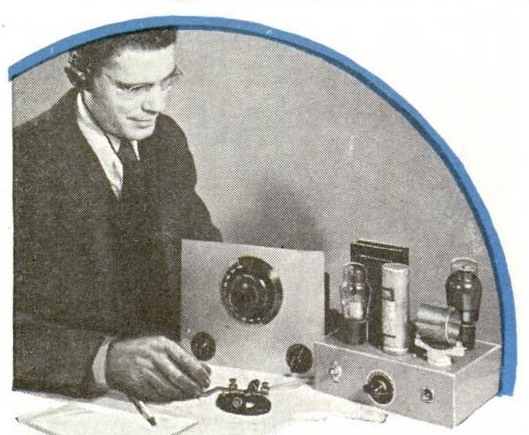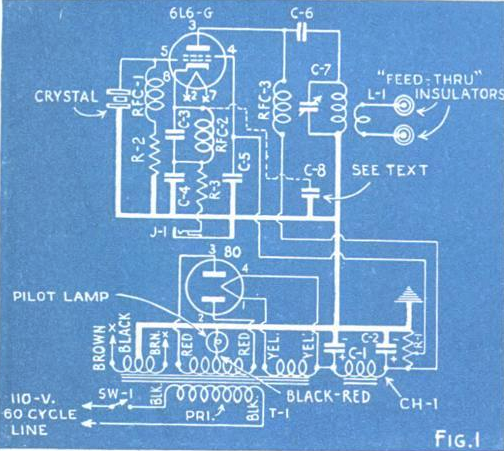 Eighty years ago this month, the April 1941 issue of Popular Mechanics showed how to put together this simple CW transmitter designed to cover five bands (160, 80, 40, 20, and 10 meters, since 15 meters wasn’t a ham band until after the war). Crystals for the transmit frequency could be used, or the crystals for 160, 80, and 40 would double easily. Plug-in coils were used to switch bands (and presumably, a 15 meter coil could be wound after the war).
Eighty years ago this month, the April 1941 issue of Popular Mechanics showed how to put together this simple CW transmitter designed to cover five bands (160, 80, 40, 20, and 10 meters, since 15 meters wasn’t a ham band until after the war). Crystals for the transmit frequency could be used, or the crystals for 160, 80, and 40 would double easily. Plug-in coils were used to switch bands (and presumably, a 15 meter coil could be wound after the war).
The 20-watt transmitter was billed as suitable for the beginner. If the receiver in the photo above looks familiar, it appeared in the magazine’s January issue, and we previously wrote about it. The transmitter, like the receiver, had a built-in AC power supply, this one using a type 80 rectifier. The transmitter itself used a 6L6-G tube. The parts for the set were said to be available in kit form from a number of suppliers, and would set the builder back about $13, plus tubes, coils, and crystals.
The new ham putting together these sets would be able to work only other U.S. stations, since there were already restrictions on working foreign stations. And 8 months later, they would be off the air after Pearl Harbor, although the receiver would continue to pull in war news.

